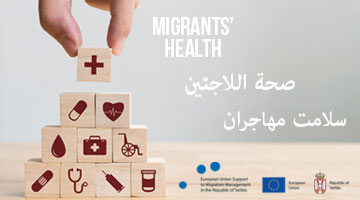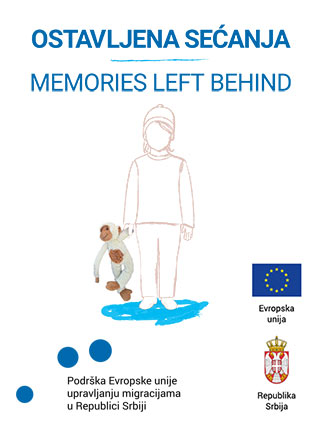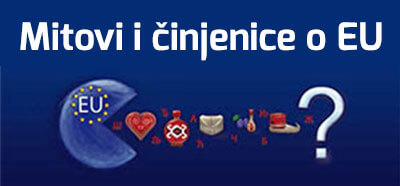2 September 2019
HIV virus – truths and myths

Despite of significant progress being achieved in the prevention, diagnosing and treatment of HIV virus, in many environments there are numerous misapprehensions, “myths” and incomplete or incorrect information about it. In order to dissuade those misapprehensions, we must talk about HIV infection and AIDS openly, in an understandable and clear manner and without embarrassment. So, by no means “beating around the bush”!
Firstly, it is good to differentiate between the notions “HIV”,„HIV infection” and „SIDA or AIDS”.
HIV is the virus of human immunodeficiency. This name sound s bit complicated, hence it is simpler to say that this is a virus which, once it has entered an organism, leads to the fall of the organism’s defence system, and then to destruction and loss of immunity.
The name of this virus (HIV) is an acronym – abbreviation consisting of the first 3 letter of it full name in English: Human Immunodeficiency Virus.
When HIV enters the organism of a person, we say that person is HIV infected. Persona with HIV infection can spend a long time (years) without presenting symptoms, so that even such persons themselves do not suspect they are infected. But after several years, HIV infection turns into a much more difficult stage of the illness called the of acquired immunodeficiency syndrome AIDS or SIDA (in French and Serbian).
AIDS is the last and most advanced stage of this illness with numerous ailments, symptoms, tumours and infections.
What are the most common misapprehensions about HIV virus and HIV infection?
- “A person with HIV can be easily recognized by the way (s)he looks.”
Hmmm, common mistake!
A person with HIV infection (HIV positive person) most often looks completely healthy, does not have to present any symptoms nor ailments and there is nothing from which we can conclude that (s)he is the carrier of virus. However, although the person with HIV fell well (and often does not know (s)he is HIV infected), (s)he can pass the virus to another person.
- HIV infection is the “illness of drug addicts” and I am convinced it is rarely transmitted through sexual intercourse!
Again a mistake!
The most common manner of HIV transmission is the unprotected sexual intercourse (sexual intercourse without condoms)!
The greatest risk comes from anal sexual relations (whether they happen between two men or between a man and a woman), then from vaginal ones, and then from the oral ones. Anal sexual intercourse bears the largest risk as the mucus of the anus (final section of the colon) is very thin, it is easily hurt during sexual intercourse, and as there is a large number of capillaries and blood vessels right beneath the mucus, the virus gets into the blood easily.
Apart from the sexual path of transmission, HIV can be transmitted by blood (most often by the use of syringe and needle for the intravenous drug use and by sharing straws for the sniffing of drugs), as well as from the infected mother to the child (during pregnancy, birth and breast feeding).
- Can HIV really be transmitted by oral sex?!
This is one of the most frequently asked questions and dilemmas!
Although oral sex has been mentioned as the sexual practice with lower risk of HIV transmission as compared to anal and vaginal sex, there are more and more of newly discovered cases of infection that has been transmitted in this way! During oral sex, the person giving it is primarily at risk, as the mucus of the mouth always has small breakages, lacerations, scratches, that are the “entry point” for HIV, which is situated in the sexual fluids of infected person (in the sperm, pre-ejaculatory fluid or vaginal secretions). It is important to know that in the pre-ejaculatory fluid of HIV positive man there is a sufficient quantity of virus (and the quantity of pre-ejaculatory fluid secreted during an intercourse varies from person to person), hence HIV can be transmitted by oral sex whether the ejaculation took place in the mouth or not (whether the sperm was poured out into the mouth or not).
- I have heard on several occasions that only the people from the “risky groups“ get HIV!
Incorrect information!
There are no risky groups, there is only risky behaviour! The data indicate that persons who often change sexual partners are at increased risk of becoming infected with HIV (as they have large number of sexual partners), and they do not use protection (condoms), who often have “one-night stands”, who have several parallel relationships (several partners at the same time), then, persons who have anal sexual relations without condoms and persons who exchange drugs injecting kits (do not use sterile one). These are extremely high risks for the transmission of HIV, so these persons, apart from regular testing to HIV, should also reduce the risks and always use condoms.
- Is it possible that someone who has such a serious infection as HIV is, can feel nothing… don’t have any symptoms?
Yes, and that is the problem, as the virus entering the organism does not cause any visible changes. Only in about 10-30% of infected persons, for a couple of week after the infection, and over a short period of time, the non-specific signs of infection can be observed, such as the symptoms resembling the flu or infectious mononucleosis (increased body temperature, swollen glands, throat inflammation, muscle pain, skin rash). During this period (“the window period”) as a rule, the presence of HIV antibodies cannot be proven, and the infected person is most contagious during this period and capable of transmitting the virus to another person. After this period, most often for years, there are no signs of illness, and the clinical symptoms occur (on average) only after ten or more years.
- I would get tested, but I am sure how reliable the test is and what time is the best to do the test?
Test to HIV (with counselling) is the only reliable way for a person to find out if she is HIV infected. For the result to be correct, the test needs to be done 4-6 weeks after the last risk (if Ag/Ab combo test is used), that is 12 weeks from the last risk (if the Rapid test to Ab is used).
This period of 4-6 weeks (or 12 weeks) is called the “window period” and, if the test is performed before that period is over, the test result would be negative, although that person is infected with HIV and can transmit the virus to another person.
- I took an HIV test and it was negative. If I am negative, then my partner does not have HIV either.
Wrong conclusion and lack of information!
HIV does not get transmitted to the HIV negative person during every sexual intercourse with an HIV positive person. The truth is that HIV can be transmitted event form a single unprotected intercourse, but it can also happen that it does not get transmitted even after a large number of sexual intercourses.
What does this practically mean? It means that by checking our HIV status we cannot check the status of our partner(s)! If a person is HIV negative it does not mean that his/her partner is also HIV negative (he or she might be HIV positive, but the virus has not been transmitted (yet)). For this reason it is important for both partners to get testes to HIV.
- So, is there any purpose in getting tested to HIV? If I am HIV positive, I cannot be saved!
Totally wrong opinion!
By getting tested to HIV you show high level of awareness and responsibility toward yourself as in that way you reduce the possibility for the HIV Infection to be discovered too late, which can lead to numerous complications and premature death; it also shows responsibility towards other people as thus you reduce the possibility of further transmission of the virus to other people, including the transmission from the mother to child, and thus you preserve health and the lives of the persons close to you. Today we have efficient therapy which has levelled the life expectancy of persons with HIV with the one of persons not infected with HIV. If HIV infection is discovered in time / hence, as soon as possible/ and starts taking the therapy for HIV (antiretroviral medications), there are great chances that person will live long, with a good quality of life, productively and experience an advanced old age.
Prim. dr. sci. med. dr. Mila Paunić, MD, epidemiologist
She has been working for 30 years already as the specialist of epidemiology and health education specialist at the Institute for Health Care of University Students in Belgrade, at the Department for the prevention of AIDS and sexually transmitted infection. She has been working as the counsellor for voluntary counselling and testing to HIV with great enthusiasm and a lot of care.
After completing numerous educations and trainings in the country and abroad in the field of VCCT, over the last 17 years, as the national and regional trainer and VCCR supervisor, she held more than 200 trainings and 50 supervision on the voluntary and confidential counselling and testing to HIV, both in the country and abroad, and managed many projects and programmes dedicated to the prevention of AIDS and sexually transmitted infection. She is the author or co-author of 11 books (8 in Serbia and 3 abroad) and the editor of 5 books. She has published more than 80 papers that have been published in professional magazines, collections of papers or resumes, and presented and professional and scientific events both in the country and abroad.























